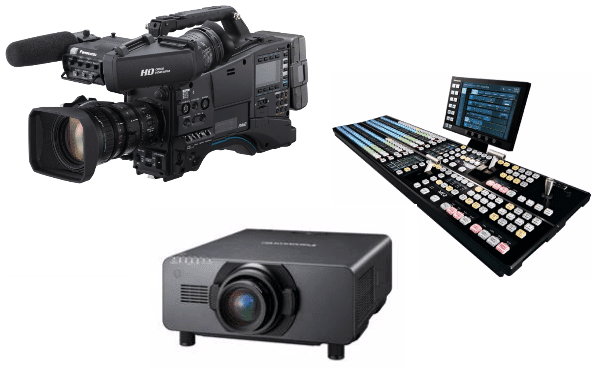As the opening ceremony sets the start of the 2016 Rio Olympics, billions of people worldwide will turn on their TVs to catch all the details. The Olympic Broadcasting Services is responsible for providing the images and sounds of all competitions as a service to all broadcast organizations that have purchased the television and radio rights to the games – Rights Holding Broadcasters. OBS forecasts that the Rio Olympics will be broadcast in more than 220 territories, with an estimated potential TV audience of almost 5 billion people.
Panasonic is providing OBS with 100 full high-definition cameras. The equipment is different from what was used in London in 2012, Alessandro Batista, marketing manager for the Rio Olympics, told RCR Wireless News. Four years ago, Panasonic provided 3D cameras. “The image quality is quite superior. We are delivering high-end technology for the games, but nothing under tests,” he added.
Asked about the ultra-high-definition television, the 4K standard for television, Batista noted it might come up over the next Olympics, but “4K needs to be consolidated before adopting it in the Olympic Games”.
For those attending the competitions, a 55-square-meter screen will be installed in entertainment areas and meet-up points inside the Olympic Park in Barra da Tijuca and in Deodoro, called Live Site. This should allow spectators to follow everything that’s happening inside the arenas during the day. Batista explained that Panasonic is responsible for the data transmission of the images captured by cameras to the LED panels. It used both its own infrastructure and Embratel’s fiber-optic network.
For the sports arenas, Panasonic is providing 72 LED big screens, which will display images and scores for live matches at the same time at 35 arenas. This year, the broadcast cameras also will supply images that will help judges during the games, in the case of any controversial decisions.
In addition to that, Panasonic is providing the switchers and 110 projectors that will be used during the opening and closing ceremonies. With that many projectors, it is possible to cover the entire Maracanã stadium with mapped projections. According to the company, the Rio Olympics will have four-times as many projectors as London 2012.
Batista said Panasonic’s work with the games began four years ago.
“We need to be involved during the whole process, since the beginning with the definition of the venues’ locations, because we must know, for example, where Embratel was passing the fiber optic network, what kind of lighting [General Electric] was providing,” he said. The type of LED is a very sensitive point because it interferes with image capturing. The company allocated around 300 professionals to work in the Olympics project.
GE is supplying lighting and ensuring power connectivity and continuity for the International Broadcast Center, which serves as the primary base of operations for OBS. “We’re providing over 3,000 uninterrupted power supply units, commonly called “no breaks” to IBC,” said Alfredo Mello, commercial head at GE for Rio 2016 Olympic and Paralympic Games. At total, GE said it will supply 190,000 lighting features in an area totaling 4.3 million square meters. Half of these projects will be completed with energy-saving LEDs.
Click here for more stories about the 2016 Rio Olympics.
Editor’s note: This story is part of a series focused on the technology deployments that support the Rio 2016 Olympic.

Rio Olympics: Full HD cameras, LEDs to support broadcasting
ABOUT AUTHOR
